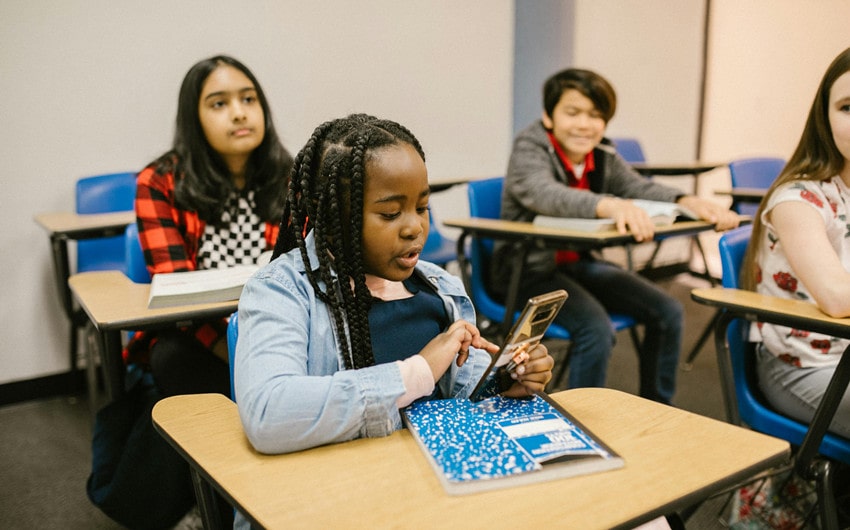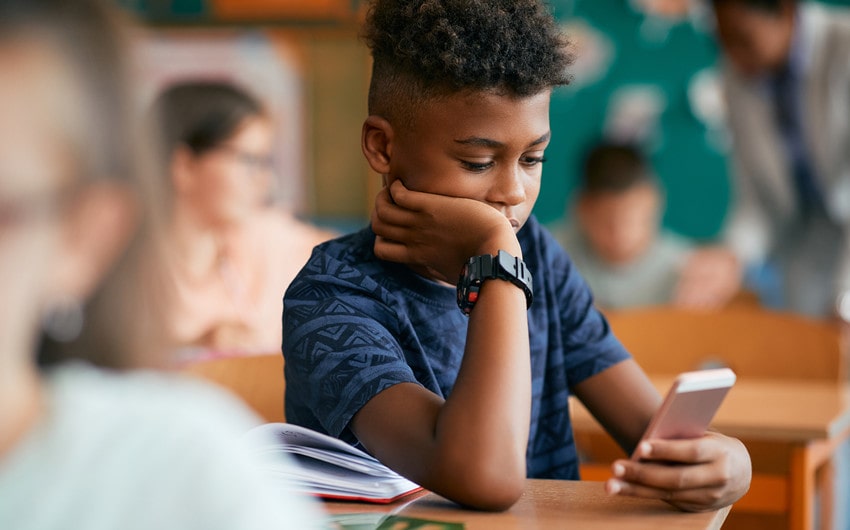10 Reasons Why Phones Should Be Allowed in School
In today’s world, smartphones are an essential part of daily life, especially for students who are growing up in a digital age. While some worry about their use in classrooms, it’s important to consider how phones can actually help students learn, stay connected, and prepare for the future.
There are many practical reasons why phones should be allowed in school, ranging from access to educational tools to ensuring safety. Let’s explore how embracing this technology can create better learning experiences for students and a more connected school environment.
10 Reasons Why Phones Should Be Allowed in School

1. Access to Educational Apps and Tools
Smartphones are like pocket-sized computers that give students access to a vast array of learning resources. Educational apps such as Google Classroom, Duolingo, and Quizlet enhance the learning process by providing interactive lessons, flashcards, and exercises tailored to various subjects.
Note-taking apps like Evernote help students organize their thoughts, while apps like Khan Academy or Wolfram Alpha can explain complex concepts in simple ways. Phones also enable students to explore new skills, such as coding or creative writing, ensuring that their education extends beyond the classroom walls.
2. Quick Access to Online Resources
Gone are the days when students had to wait to use a library or computer lab to find information. Phones make research immediate, allowing students to answer questions on the spot during lessons or group discussions.
For instance, a history student could quickly verify the timeline of a historical event, while a science student could explore real-world examples of theoretical concepts. With access to credible websites, e-books, and academic articles, students are empowered to deepen their understanding of topics and take a more active role in their education.
3. Fostering Collaboration
Collaboration is an essential skill for the modern workforce, and phones make it easier for students to work together effectively. Messaging apps and platforms like WhatsApp or Slack allow students to brainstorm ideas, share resources, and divide tasks for group projects.
Tools like Google Docs and Microsoft Teams enable real-time collaboration, letting students edit documents or presentations simultaneously from anywhere. This technology breaks down barriers and ensures that students can stay connected, whether they’re working on assignments in the classroom or coordinating efforts after school hours.
4. Improving Communication with Parents
Phones serve as a direct line of communication between students and their parents. This connection is particularly important for addressing last-minute changes in schedules, coordinating pick-up times, or staying updated during emergencies.
For example, if a student forgets a homework assignment or an extracurricular activity runs late, they can quickly inform their parents. This open line of communication reduces anxiety for both students and parents, ensuring that everyone stays informed and connected throughout the school day.
5. Supporting Emergency Situations
Phones are invaluable in emergencies, providing a quick and reliable way to reach help. In a crisis, whether it’s a medical emergency, a school lockdown, or a natural disaster, students can use their phones to call emergency services, notify parents, or follow school safety instructions.
Phones can also serve as tools for receiving emergency alerts, such as severe weather warnings. By having a phone on hand, students are better equipped to stay safe and informed in potentially life-threatening situations, giving both parents and school administrators peace of mind.
6. Promoting Digital Literacy Skills

Digital literacy is no longer a luxury; it’s a necessity in today’s technology-driven world. Allowing phones in schools gives students the opportunity to develop essential tech skills, such as navigating apps, conducting online research, and managing digital files responsibly.
Phones also expose students to tools like email, video conferencing, and productivity apps, which are integral in higher education and the workplace. Moreover, teaching students about safe internet use, privacy protection, and online etiquette helps them become informed and responsible digital citizens.
7. Making Learning Interactive
Phones can transform traditional teaching methods into dynamic and engaging experiences. Students can watch educational videos, participate in interactive quizzes, and even explore augmented reality (AR) tools to better understand difficult concepts.
For example, an AR app could allow students to explore a 3D model of the human body during biology class or experience historical landmarks virtually in history lessons. Interactive activities not only make learning more enjoyable but also improve knowledge retention, as students are more likely to remember information presented in creative and engaging ways.
8. Personalized Learning Experiences
Every student learns differently, and phones can help cater to their unique needs. Adaptive learning apps like Khan Academy or Duolingo adjust their content based on the student’s progress, ensuring they are neither overwhelmed nor bored.
For students who need extra support, phones provide access to tutorials, practice tests, and study aids that can help them improve at their own pace. On the other hand, advanced students can use phones to explore more challenging material or learn new skills, ensuring that their learning journey is tailored to their abilities.
9. Encouraging Organizational Skills
Phones are powerful tools for teaching students how to stay organized. Built-in features like calendars, reminders, and to-do lists can help students keep track of homework deadlines, test dates, and extracurricular activities. Productivity apps like Trello or Notion teach students how to manage complex tasks and projects effectively.
Learning to plan and prioritize tasks from an early age is an invaluable skill that not only benefits students academically but also prepares them for success in their future careers.
10. Enhancing School-Home Communication
Phones allow schools to maintain direct communication with students and their families, ensuring that everyone is informed about important updates and events. For example, schools can use text messages, emails, or dedicated apps to notify parents about weather-related closures, upcoming parent-teacher conferences, or changes in extracurricular schedules.
This seamless communication builds trust between schools and families, creating a stronger sense of community and ensuring that parents are actively involved in their children’s education.






